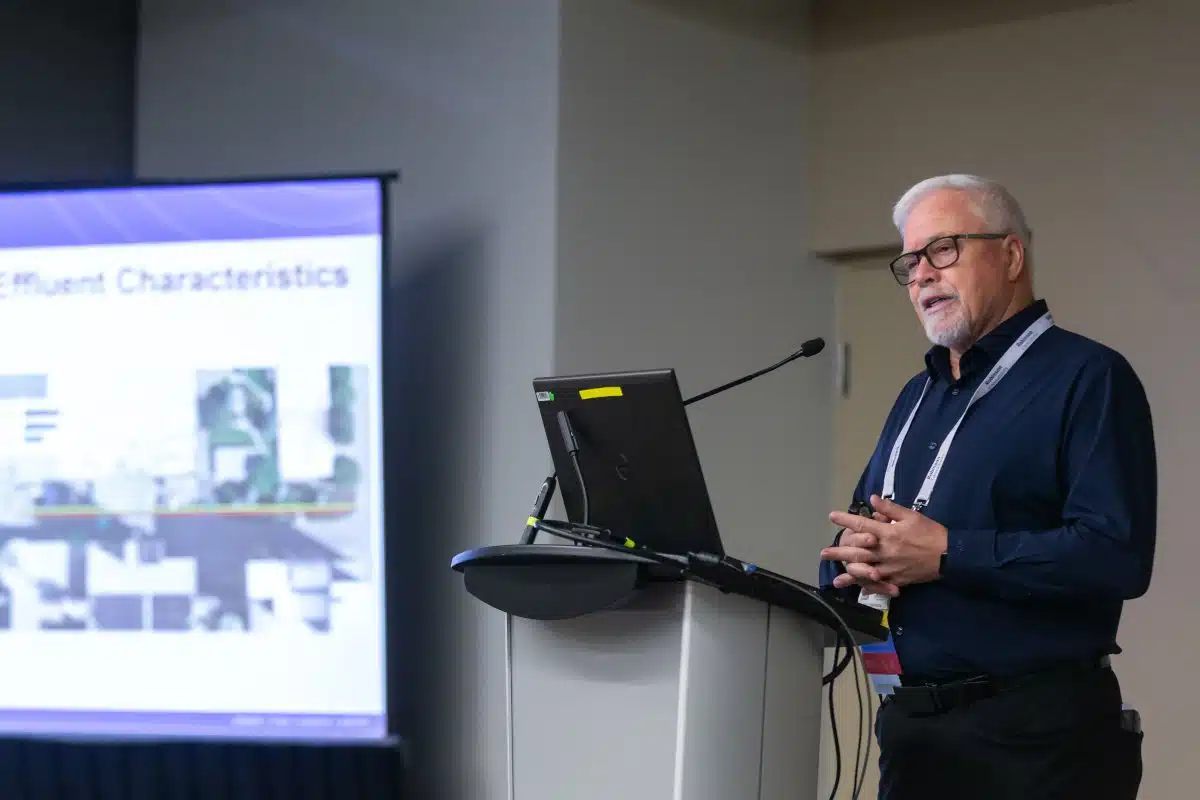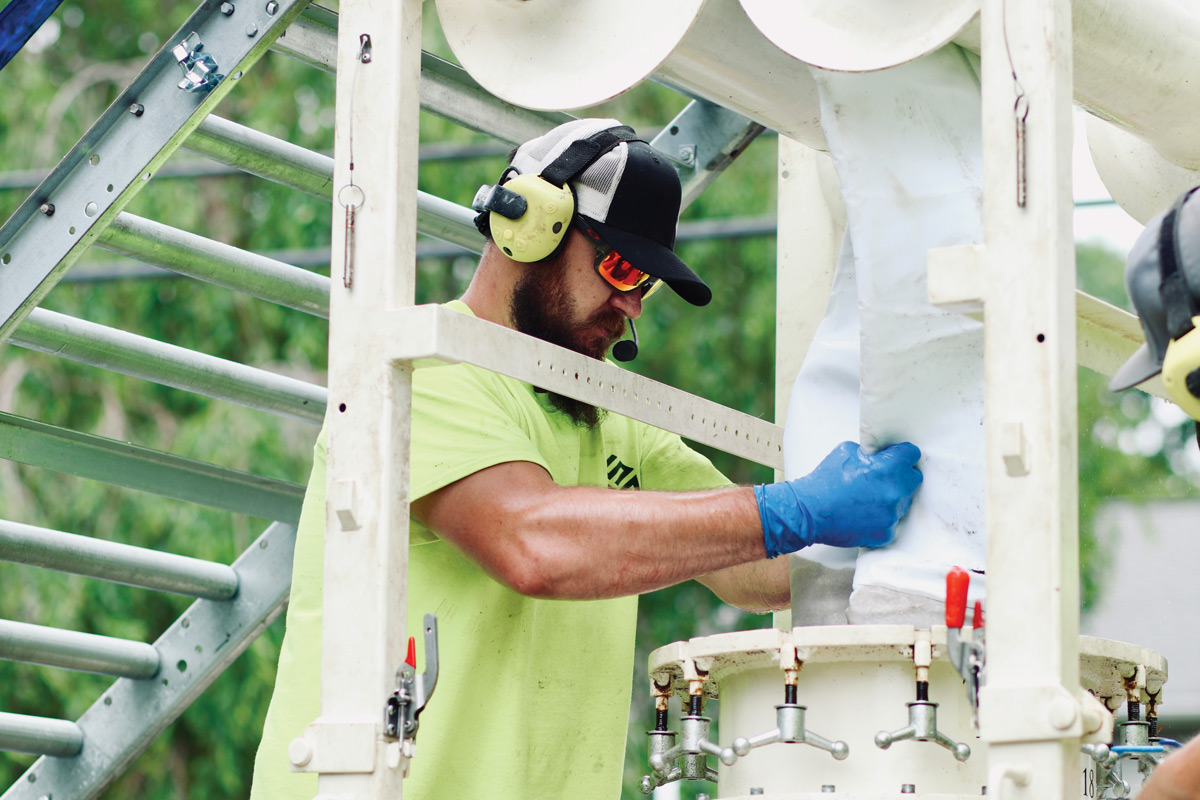
Picking the Brain of: Ken Foster
July 13, 2016
In this edition of “Picking the Brain of:” the Trenchless Technology Canada staff reached out to Ken Foster, president at Insituform Technologies Ltd., Edmonton, Alberta and 2016 NASTT Hall of Fame Inductee.Please give our readers a little bit of your background.
I graduated from the University of Liverpool, United Kingdom, with a degree in civil engineering and worked for four years with two cities in England before I immigrated to Canada in 1970. I joined a small consulting company in Edmonton, Alberta, and worked on transportation and municipal engineering projects for municipalities throughout Western Canada. In 1988 I joined a company with a license for Insituform in Alberta and Saskatchewan and about a year later we formed a joint venture with Insituform Group from the United Kingdom for Insituform for the whole of Canada. Since then, I have been responsible for the management of Insituform throughout Canada. I was also responsible for the management of the Western United States from 2012 to the end of 2013 and since then have been involved in the European operations, as well as Canada.
How did you get involved in the trenchless technology industry?
In the early 1980s, our consulting company was working on a major sewer and water replacement project in Yellowknife, Northwest Territories and the construction of the necessary improvements created major disruption through the City and I thought there had to be a better way to do this work. As a consequence of this work, I realised that the underground infrastructure of all municipalities was aging and deteriorating and would need to be rebuilt at some time in the future. In 1986, the City of Edmonton embarked on a major infrastructure rehabilitation program covering three major neighbourhoods near to the downtown for both surface and underground infrastructure. Our company was fortunate to be awarded one of these projects, which required a condition evaluation of the infrastructure and to recommend a rehabilitation program. Since we had limited knowledge of underground infrastructure rehabilitation, we contracted with WRc from the United Kingdom, which was probably the leader in this field, to be our specialist sub-contractor for these tasks. It was during this work that I became familiar with the methods of evaluation and the possible rehabilitation systems that were available at that time for both sewer and water mains. I realised that there was great potential in the future for this type of work and left the consulting industry in 1988 and joined what was to become Insituform Technologies Ltd. in Canada.
How would you describe the state of the trenchless market in Canada?
The market has come a really long way since the mid to late 1980s. When we started, we had to be a little like missionaries, trying to educate people on the need for trenchless technologies and satisfy them that it was a long term solution and not just a quick temporary fix. Now it is well accepted, but in saying that, there are still instances when we find that some are still not familiar with the methodologies or even know they exist. Fortunately for the industry, these instances are much rarer today. I feel that the industry is very buoyant both in the new construction sector and the rehabilitation sector. When we attend the trenchless technology conferences we see larger and larger audiences each year which indicates the great and increasing interest in this industry.
RELATED: Picking the Brain of: Bill Garibaldi
In your experience, how does the Canadian trenchless market compare to the international market?
The exposure I have had to the international trenchless market is based on the past two years when I have been involved in Europe. I was surprised to find that in the United Kingdom the water authorities appear to take a much shorter term view of the system and their rehabilitation plans are quite prepared to recommend minor fixes rather than full length rehabilitation to basically minimise expenditures in a five-year horizon. In Canada and the United States, a much longer term approach is being taken and generally rehabilitation plans for an area are more comprehensive and based on fixing the issue for a minimum period of 50 years. Utility-based funding in Canada seems to be more prevalent than in some areas of Europe. The per capita amount of trenchless rehabilitation in Canada and the United States appears to be greater than in most countries in Europe. One area where Europe is ahead of North America is the use of UV curing systems for lining. However, I believe that with the improvements that have been made with the speed of steam cure in North America steam-cure-based systems will continue to be more cost-competitive than UV-cure for longer inversion lengths. Another difference is that in many European countries, your system has to be certified for use in that particular country, not just meet the contract specifications. Obtaining these certifications can take time and may require several test installations with significant testing being required before they will be approved for use. Generally in North America there is a low bid mentality whereas in Europe there is a greater emphasis on quality and performance history and a wider use of evaluated bids where price is only one factor.
Where do you see trenchless technology heading in the short- and long-terms in Canada? Biggest growth areas?
Over the past 20 years the emphasis in trenchless rehabilitation has been on sewers with lesser attention to water mains and other pressure pipes. More recently, there has been the introduction of pressure pipe lining systems but generally this has been limited to smaller diameter pipes. I see the pressure pipe market being the largest growth area for the industry and several new systems with a much larger range of diameters are being introduced to the market and more will follow in the next few years. While there has been substantial growth of trenchless rehabilitation over the past few years, there are not many municipalities that are keeping pace with the ongoing deterioration of their underground infrastructure. Utilities have a finite life and the longer that municipalities delay the necessary work the bigger the problem grows and the more expensive the solution becomes. As I mentioned earlier UV-cure systems will increase in both Canada and the United States especially for shorter length installations and those in more environmentally sensitive locations. The use of non-styrene based resin systems will also increase but currently the cost of these resins is significantly higher than the traditional styrene-based resins that have been used for many years.
RELATED: Picking the Brain of K.C. Er
How has pipe relining evolved over the time you have been involved in the industry?
The first installation that I saw was in 1987 in Edmonton and while it was successful it was quite the undertaking. All installations were based on water cure and it would be considered a success if three installations were completed in a week. Resin technology for these processes was not really well advanced and the water cure was slow. High scaffolds were required to create the hydrostatic head required to invert the liner. Gradually resin technology improved, cure times became shorter but still only one installation a day was normal. Today, with the advent of the air inversion and steam cure, it is possible to install more than 1 km of small diameter lining in one week. This has resulted in significant increases in productivity and consequently costs and prices have dropped dramatically over the past several years. Prices for pipe relining have become so economical that most municipalities recognise that the first option for their pipe rehabilitation is relining and not traditional open cut replacement.
What are some key issues that the trenchless industry as a whole faces?
I think that one of the concerns might be over promising what can be achieved by trenchless technology in the rehabilitation sector. There are limitations on what each method can reasonably be expected to achieve, there is a danger of overpromising and underperforming. While there are many experienced people in both consultants and municipalities there are still many who do not fully understand the complexities and requirements for a rehabilitation programme. We still see specifications that come out that do not establish the basic performance requirements of the systems to be installed so that the actual bids may be proposing significantly different levels of performance. There still is a requirement for educating the owner of the system to ensure that they are actually contracting for what they want and need. There are now some excellent training seminars which are helping this education process. As we move into new areas such as pressure pipe rehabilitation this requirement will become more essential as there are a lot more complexities in pressure pipe rehabilitation than in basic gravity pipe rehabilitation.
You were recently inducted into NASTT’s Hall of Fame. What does that mean to you?
Being elected to the Hall of Fame was a real surprise to me and is certainly a great honour to be recognised by people in your own Industry. When I look at the people who were previously elected to the Hall of the Fame and to be effectively standing alongside them, means a great deal to me. Two persons from Insituform were previously elected, Eric Wood, the inventor of Insituform and Bob Affholder. They are two persons who I met many times and greatly respect and for me to be elected alongside them is very special.
RELATED: Picking the Brain of: Derek Potvin
What is it about trenchless technology that excites you?
When I started in this field, the excitement was developing and expanding a relatively new industry in Canada and it took a lot of work and there were several disappointments along the way. It took many years to get to the point where trenchless technology became almost a household name in the Infrastructure sector. As the years have gone by the industry has changed, there are so many new innovations being developed and we can see new areas of potential that in the past were not possible for our industry to suggest a solution. The new area of pressure pipe is generating a lot of interest and we as a company are investing a lot of time and effort into developing new and better products to meet this requirement. I have found that trenchless technology does not stand still, it is still a relatively new field and there are always new things to review and solve, it is never boring.





